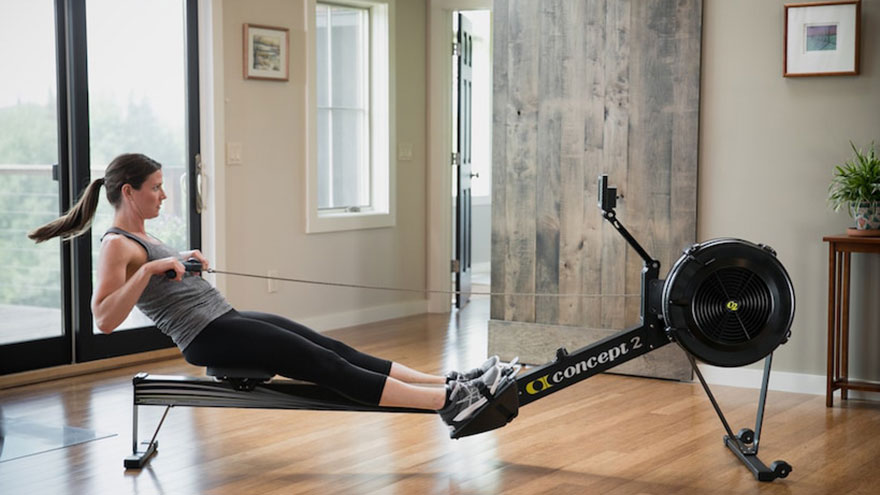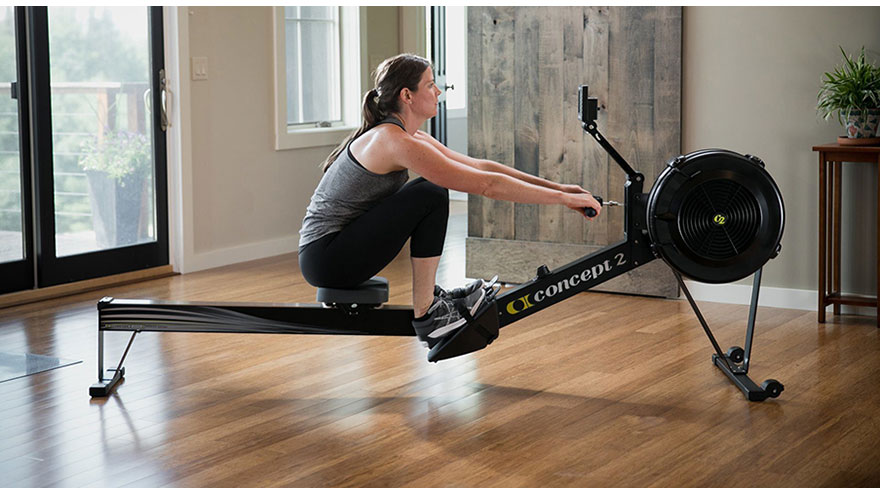How to Use Rowing Machines
If you’ve never sat in a rowing shell, it might seem natural to sit down on a rowing machine’s seat and scoot forward and back, without ever really engaging your back or arms.
But to really make the best use of this gym machine and enjoy the greatest benefits, you must turn that leg “scoot” into a powerful drive, pairing it with a fully engaged torso and quick hands, as if you were bringing the handle of an oar in toward your body.

Mastering Basic Technique
Proper rowing technique starts with a strong leg drive. Scoot the rowing machine’s forward until your knees are bent, arms holding the handle straight out in front of you. Sit up, leaning forward from the hips, and look straight ahead. Push off powerfully with your legs first, then allow your upper body to swing slightly back from the hips.
Bring your hands back in a straight line toward your ribs, at about where woman’s bra band sits. Reverse the motion to complete the stroke. Practice this with little or no resistance on the rowing machine until you feel comfortable with the motion.
Adjusting Resistance
If you subscribe to the scoot-scoot school of rowing, you must adjust the machine’s resistance as high as possible to get any sort of workoutl. But as soon as you start using proper technique, the motion becomes much more challenging.
Even seasoned rowers usually stick to around 30 to 50 percent of the machine’s maximum resistance for long-distance workouts; reserve higher resistance levels for sprints and longer pushes.
Work Those Muscles
A rowing machine works almost every major muscle in your body, with the strongest emphasis on your quads as they straighten your legs, your glutes as they swing your upper body back from the hips, plus your shoulder and back muscles as they bring your arms and hands quickly in toward your body.

Workout Types and Goals
Rowers will usually monitor their stroke cadence as they row; about 24 strokes per minute is a good pace for long-distance rowing training. Use a rate of 30 strokes per minute for high-intensity intervals.
Try setting a distance goal for yourself, working up to and past 1,600 meters, or about a mile of rowing. You can also do high-intensity intervals by briefly increasing the machine’s resistance, or entertain yourself by racing to a set distance with a friend on a nearby machine.
If you need a general goal to aim for, try to meet the Centers for Disease Control and Prevention’s recommendations for fitness: At least 150 minutes of moderate rowing per week or 75 minutes of vigorous rowing.
You Might Also Like :: How to Find the Best Spinning Shoes

